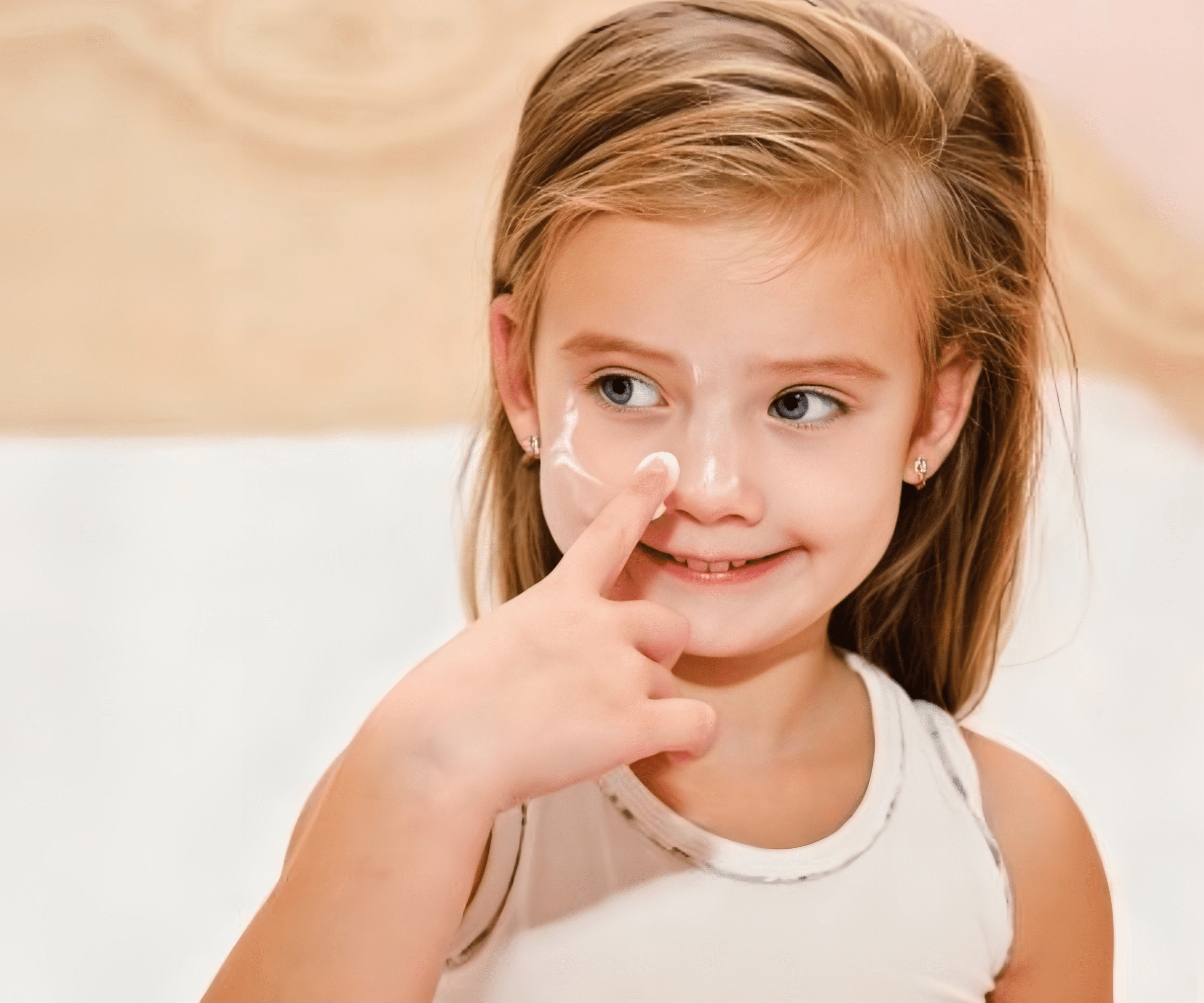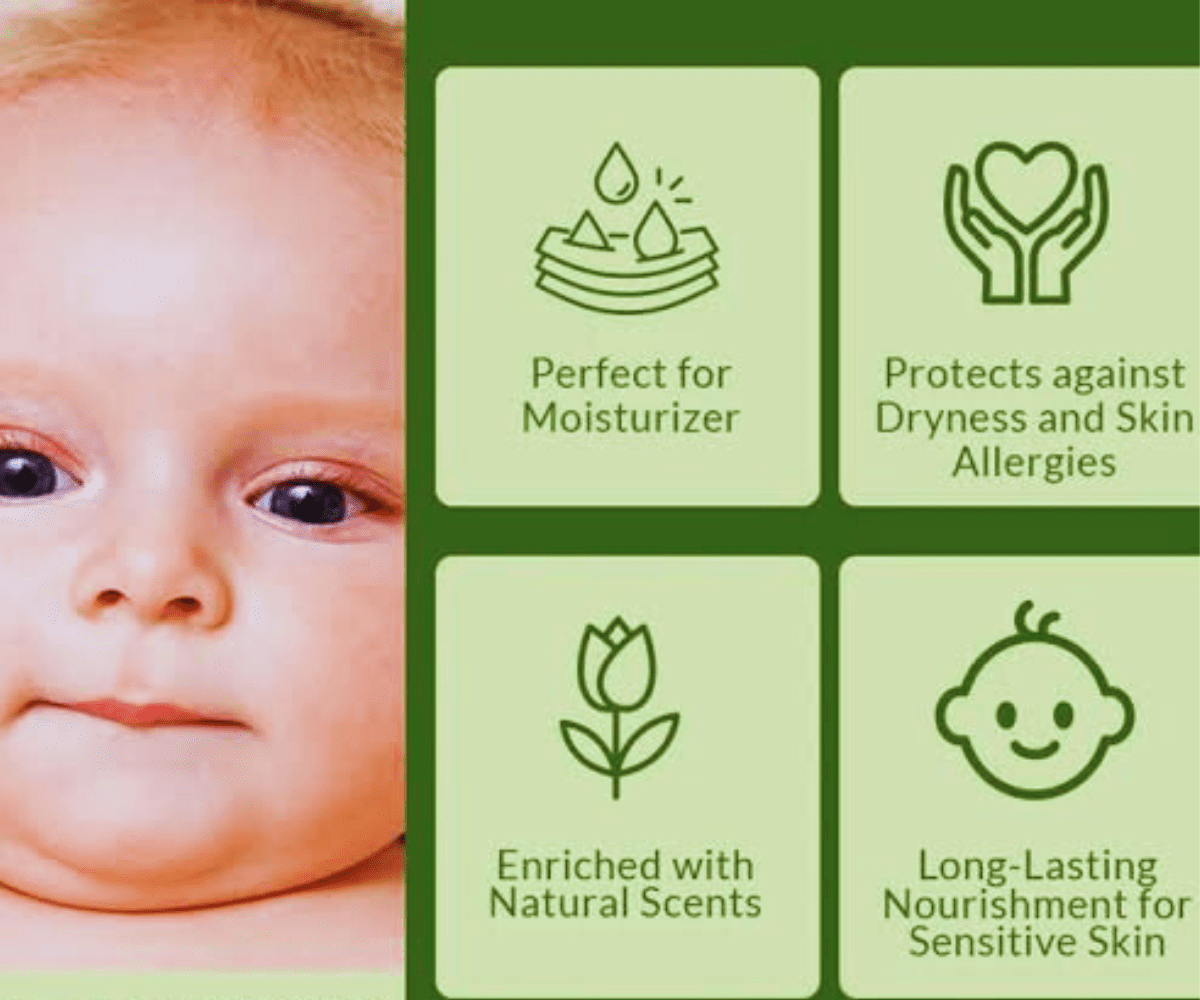As a new parent, navigating the world of baby care products can be overwhelming. With lots of choices out there, it’s really important to pick the best cream for your baby’s soft skin. In this guide, we’ll talk about baby creams, why they’re good, what they’re made of, and how to pick the right one for your baby.


Understanding Baby Creams
Baby creams are special lotions made for babies and little kids. They help keep their skin soft, safe, and healthy. These creams are usually made with gentle stuff that won’t hurt their delicate skin.
Benefits of Using Baby Cream
Using baby cream every day for your child can help them in many ways, like:
- Skin Hydration: Baby creams help lock in moisture, preventing dry, flaky skin and keeping your little one’s skin soft and supple.
- Irritation Relief: Many baby creams contain soothing agents like aloe vera, chamomile, or colloidal oatmeal, which can help alleviate skin irritation, redness, and discomfort.
- Barrier Protection: Baby creams can create a protective barrier on the skin, shielding it from environmental factors like wind, cold, and harsh chemicals.
- Eczema Management: Some baby creams are specifically formulated to help manage the symptoms of eczema, a common skin condition in infants and children.
- Diaper Rash Prevention: Certain baby creams can help prevent and soothe diaper rash by creating a protective layer between the skin and the diaper.
Key Ingredients to Look for in Baby Creams
When selecting a baby cream, it’s essential to be aware of the key ingredients that make these products effective and safe for your child. Some of the most common and beneficial ingredients include:
- Emollients: Emollients, such as shea butter, cocoa butter, and natural oils (e.g., coconut, olive, or jojoba oil), help to soften and hydrate the skin.
- Humectants: Humectants, like glycerin and hyaluronic acid, attract and retain moisture, keeping the skin well-hydrated.
- Ceramides: Ceramides are natural lipids that help maintain the skin’s protective barrier, preventing water loss and protecting against irritants.
- Colloidal Oatmeal: Colloidal oatmeal has soothing and anti-inflammatory properties, making it effective in relieving skin irritation and eczema.
- Aloe Vera: Aloe vera is a natural, cooling ingredient that can help soothe and calm inflamed, irritated skin.
- Chamomile: Chamomile is known for its anti-inflammatory and calming properties, making it a beneficial addition to baby creams.
Choosing the Right Baby Cream
With so many baby creams on the market, it can be a challenge to determine which one is best for your little one. Here are some factors to consider when selecting a baby cream:
Skin Type and Concerns
- Dry Skin: Look for creams that contain emollients and humectants to deeply hydrate and lock in moisture.
- Sensitive Skin: Opt for creams with gentle, hypoallergenic ingredients and minimal added fragrances.
- Eczema-Prone Skin: Choose creams formulated with ceramides, colloidal oatmeal, or other soothing ingredients to help manage eczema symptoms.
- Diaper Rash: Consider creams that create a protective barrier to prevent and soothe diaper rash.
Ingredient Quality and Safety
- Natural and Organic: Look for baby creams made with natural, organic ingredients whenever possible, as they are generally gentler and safer for your child’s skin.
- Free from Harsh Chemicals: Avoid creams that contain parabens, phthalates, sulfates, and other potentially harmful chemicals.
- Hypoallergenic and Non-Irritating: Ensure the cream is hypoallergenic and non-irritating, especially if your child has sensitive skin.
Texture and Application
- Consistency: Choose a cream that has a smooth, non-greasy texture that is easy to apply and absorbs quickly into the skin.
- Scent: Some parents prefer unscented baby creams, while others enjoy light, natural fragrances. Consider your personal preference and your baby’s sensitivity to scents.
- Ease of Use: Look for creams that come in easy-to-use packaging, such as a pump or tube, to simplify the application process.
Brand Reputation and Reviews
- Established Brands: Research well-known, reputable brands that specialize in baby and children’s products, as they often have a proven track record of safety and efficacy.
- Customer Reviews: Read online reviews from other parents to get a sense of the cream’s performance, skin compatibility, and overall satisfaction.
Top Baby Cream Recommendations
Based on the factors mentioned above, here are some of the top baby creams on the market:
Cetaphil Baby Daily Lotion
- Key Ingredients: Glycerin, Panthenol, Aloe Vera
- Suitable for: Dry, sensitive skin
- Benefits: Gentle hydration, soothing, and non-irritating
Eucerin Baby Eczema Relief Cream
- Appropriate for: Every skin type, including those prone to sensitivity
- Suitable for: Eczema-prone skin
- Benefits: Helps manage eczema symptoms, restores skin’s protective barrier
Aveeno Baby Daily Moisture Lotion
- Key Ingredients: Colloidal Oatmeal, Dimethicone
- Primary components: Colloidal Oatmeal, Ceramide-3, and Licorice Root Extract
- Benefits: Gentle hydration, soothing, and non-greasy
CeraVe Baby Moisturizing Cream
- Key Ingredients: Ceramides, Hyaluronic Acid, Niacinamide
- Suitable for: Dry, sensitive skin
- Benefits: Deeply hydrates, strengthens skin’s protective barrier
Burt’s Bees Baby Nourishing Lotion
- Key Ingredients: Shea Butter, Vitamin E, Buttermilk
- Suitable for: All skin types
- Benefits: Gentle, natural ingredients, non-greasy formula
Sure! Before you put a new cream on your baby’s whole body, try a small amount first. Even if it says it’s safe for sensitive skin, it’s smart to check for any bad reactions.
Applying and Using Baby Creams
Proper application and usage of baby creams are essential to ensure the best results for your little one’s skin. Here are some tips to keep in mind:
Frequency of Application
- Apply baby cream after bathing, when the skin is still damp, to help lock in moisture.
- Reapply as needed throughout the day, especially after diaper changes or if your baby’s skin appears dry or irritated.
- For severely dry or eczema-prone skin, consider applying the cream more frequently, such as before bedtime.
Amount to Use
- Start with a small, pea-sized amount and gently massage it into your baby’s skin, taking care to cover all areas.
- Adjust the amount as needed, using more for larger areas or drier skin.
- Avoid using excessive amounts, as this can lead to buildup or clogged pores.
Targeted Application
- Focus on areas that are prone to dryness, such as the cheeks, elbows, and knees.
- For diaper rash, apply a thin layer of cream to the affected area during each diaper change.
- If your baby has eczema, concentrate the cream on the areas with active flare-ups.
Complementary Products
- Consider using a gentle, fragrance-free baby wash or soap to cleanse your child’s skin before applying the cream.
- Pair the baby cream with a lightweight, non-irritating baby oil or lotion for added moisture and nourishment.
Remember, every baby’s skin is unique, so it may take some trial and error to find the perfect baby cream routine that works best for your little one.


Frequently Asked Questions (FAQs)
What are the benefits of using a baby cream?
Baby creams provide a range of benefits for your little one’s delicate skin, including:
Moisturizing and hydrating the skin
Soothing and reducing irritation
Protecting the skin’s natural barrier
Preventing and treating skin conditions like eczema and diaper rash
Nourishing the skin with essential vitamins and minerals
When should I start using a baby cream?
You can start using a baby cream as soon as your little one is born. It’s important to establish a skincare routine early on to help protect and nourish your baby’s delicate skin.
How often should I apply baby cream?
The frequency of application will depend on your baby’s skin type and needs. Generally, it’s recommended to apply a baby cream at least once or twice a day, such as after bath time and before bedtime.
Can I use any regular moisturizer on my baby?
It’s better not to use grown-up lotion on your baby’s skin because it might have stuff that’s too strong for their delicate skin. Stick to creams that are specifically formulated for babies.
What should I do if my baby’s skin reacts to the cream?
If you notice any adverse reactions, such as redness, irritation, or a rash, stop using the cream immediately and consult your pediatrician. They can help determine the cause of the reaction and recommend a more suitable cream for your baby’s skin.
Conclusion
Choosing the right baby cream is a crucial step in keeping your little one’s skin healthy and happy. Think about what your baby’s skin needs, what’s in the cream, and what you want it to do. Then, you can find a cream that gives your baby’s skin everything it needs to stay healthy and comfy.
Remember, every baby is different, so it may take some trial and error to find the perfect cream for your little one. Now that you have this helpful guide, you can make smart choices and give your baby the best skincare.
For more, Click here

